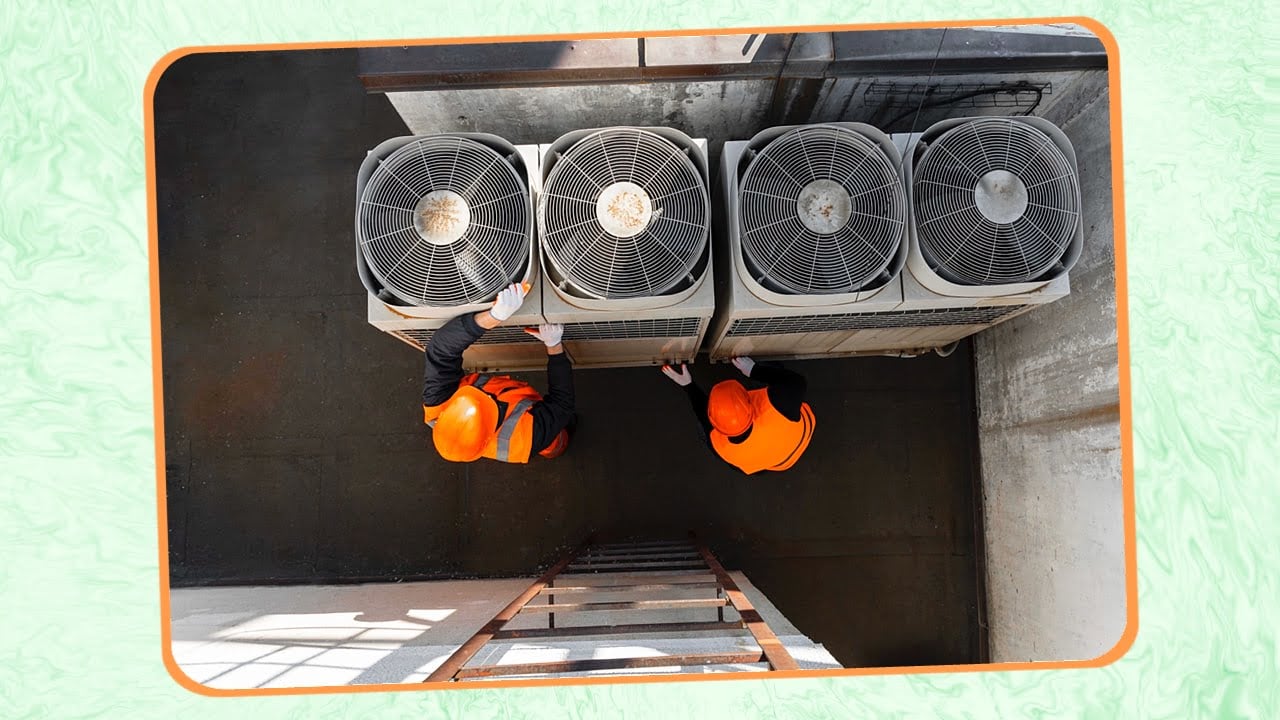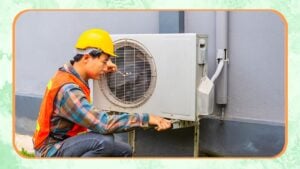Replacing your HVAC unit can cost you between $5,000 to $10,000, with the average cost being roughly $7,000. However, there are different factors to keep in mind here, which can affect the actual cost of replacement.

Let’s face it - with the amount of pollution and heat nowadays, HVAC systems have become a necessity for both commercial and residential buildings.
That said, installing a new HVAC system is only half the job done, for you’ll need to maintain it regularly to ensure optimal functioning. Still, it is a machine, after all, and like any other machine, it will inevitably wear out over time. And when that happens, you will need to replace it.
However, many people tend to avoid replacing the system, fearing the costs. Believe me - that is not a very wise thing to do, for it will only create more trouble later on. And to resolve them, you will need to shell out a lot more money.
So, to alleviate these concerns, I have prepared this guide that discusses HVAC systems and their replacement costs.
What Is An HVAC System?

Before I get into the main discussion, let’s talk about HVAC systems in general. If you are not as savvy about such things, you will find the information here to be helpful.
Many people believe that an HVAC system is like an air conditioner and that it only helps in circulating cool air through a building. Well, that is one of its primary functions, but your HVAC system does a lot more than that.
The acronym HVAC stands for heating, ventilation, and air conditioning. As you can guess from the name, it does these three things, which help to maintain the overall air quality inside a building. In some commercial buildings, an upgraded HVAC/R system is used, which offers refrigeration functions as well.
A typical HVAC system is installed in a location with minimal people traffic, such as the closet, basement, or attic room. This system consists of different components, such as the air filter, evaporator coil, fan, compressor, condenser (heat transfer), and so on, where each performs specific tasks.
It is often not a single machine but rather a collection of machines that work together to maintain the air quality inside a building. Because of that, it is quite complex in nature and is comparable to the electrical or plumbing system of your home.
The heating or cooling capacity of an HVAC system is generally measured in British Thermal Units or BTUs. For example, if your HVAC equipment has a high BTU, it will require less energy to heat or cool your room within an hour and vice versa. Of course, there are other factors to consider here, such as the square footage of the room, the tonnage of the system, and so on.
Types Of HVAC Systems
There are different types of HVAC systems used today, with each type being suited to a certain usage condition. Below, I have discussed each of these types briefly.
1. Air Conditioner HVAC System
The air conditioner HVAC system is commonly used in regions with higher temperatures and humidity levels. It consists of a typical AC unit that circulates cool and dry air inside the room. On that note, some air conditioning units come with limited heating capabilities for the winter months. Generally, this HVAC unit is either installed on the windows or is installed as a central air conditioning system.
2. Heat Pump HVAC System
Heat pumps are a type of hybrid HVAC system that offers both heating and cooling functions. This makes them more versatile and efficient than conventional HVAC systems, which consist of separate heating and cooling units. A heat pump can be used in both hot and cold regions effectively. Furthermore, you get different options here, such as a gas-powered heat pump, a geothermal heat pump, and a mini-split heat pump.
3. Furnace HVAC System
A furnace (central heating) HVAC system primarily comes with heating functions, and thus it is more common in colder regions. Furnaces are typically classified based on the fuel or power source used, with natural gas furnaces being the most common. Apart from that, you have oil furnaces and electric furnaces, which run on oil and electricity, respectively. A furnace is often complemented by an air-handling unit to meet the ventilation (architecture) and cooling needs.
4. Boiler HVAC System
The boiler HVAC system circulates hot water through a network of pipes, ducts, and radiators, which helps to increase the air temperature inside the building. It is an alternative to the furnace HVAC system, especially for smaller homes, and is usually installed in the basement. On that note, it is accompanied by a complementary AC or air handler to meet your cooling needs.

The Cost Of Replacing Your HVAC System
With that out of the way, it is now time to address the main question of this guide. The typical price range for an HVAC system replacement is between $5,000 and $10,000, with $7,000 being the average. However, the actual cost of replacing an HVAC system depends on a variety of factors, as I have discussed below.
A. Type
The biggest factor that influences the cost is the HVAC system type. Here, you need to consider the type of system you are going for, as well as the type of your existing HVAC system. This is because switching to a different HVAC system is obviously going to be more expensive than replacing the existing system with the same type.
Besides, each type of HVAC system has its own price range that you need to consider. The air conditioner system has the lowest cost, as per my experience. Of course, if you are looking to get a central air conditioner, the costs will be relatively higher than getting a window air conditioner. In any case, the total cost for such an HVAC system is between $2,500 and $6,000.
Installing a furnace HVAC system will typically cost you between $1,500 and $9,000. An electric furnace is the most budget-friendly investment here since a gas or oil furnace is comparatively more pricey. But it is not very feasible in the long term due to its energy consumption, which will ultimately increase your monthly electricity bills.
A boiler system, on the other hand, will cost you around $1,500 to $4,000 to install. Sure, it has a lower price than a furnace, but you should keep in mind that it is not very suitable for larger homes, which reduces its overall usefulness.
And lastly, there is the heat pump system, which has a considerable price variance. Depending on the type of heat pump system used, you may have to spend anywhere between $3,000 and $30,000.
B. Size Or Tonnage
Another crucial factor that impacts the cost of replacement is the size. Here, you should note that I am referring not only to the size of the HVAC unit but also to the size of your home.
If you have a large house, the amount of air that needs to be conditioned will be higher. That, in turn, will increase the tonnage of your HVAC system. And the higher the tonnage, the bulkier (and costlier) your HVAC system will be.
Based on that aspect, you can naturally deduce that the replacement process for a large house will be a lot more expensive than that for a small apartment. For example, if the square footage of your home is relatively low, you can easily get an HVAC system of two tons. In that case, you may spend around $6,500 on average.
However, if your home is quite large, you will need to get an HVAC system of at least five tons. Purchasing such a system will set you back by roughly $8,500.
C. Energy Efficiency
The energy efficiency rating is another factor to keep in mind while preparing the budget for an HVAC system replacement. You need to check out two different ratios for the HVAC system you are getting. These are the seasonal energy efficiency ratio (SEER) and the heating seasonal performance ratio (HSPF).
If you get a system that has a high SEER and HSPF rating, it will require less energy to heat or cool your home. That will ultimately save you a lot of money on your monthly energy bills. In fact, according to the United States Department of Energy, a modern HVAC system with high energy efficiency rating requires 30% to 50% less energy compared to older HVAC systems.
On the flip side, the initial costs of purchasing such energy-efficient units will be much higher. For instance, if you want to purchase an HVAC system of two tons that has a SEER rating of 14, it will cost you around $7,500. But if you wish to buy a similar-sized HVAC system that has a SEER rating of 22, you will need to spend almost double that amount.
If you ask me, I’d say that the high initial cost is a fair compromise, considering the money you’ll be saving on your monthly bill payments. In the long term, the efficient energy use will allow you to make up for this extra amount anyways, so it doesn’t really matter. Besides, you can improve on the sustainability factor by reducing your carbon footprint, so that is an added advantage.
D. Ductwork
The duct (flow) system plays a crucial role in the circulation of air, water, or refrigerant through the system. If the ductwork becomes worn out or damaged, it will stall the entire HVAC system, rendering it practically useless.
In that situation, you will need to replace not only the core HVAC units but also the entire ductwork, which will drive up the costs. And if your HVAC system consists of a complex network of ducts, the price will go even higher. However, if your ducts require only a few minor repairs in some places, the costs will be relatively lower than a full ductwork replacement.
With that being said, replacing the ductwork might not always be necessary. If the ductwork is mostly intact, you won’t need to touch it at all, which will save you a lot of money.
Warning: If you are going for a different type of HVAC system, you will need to replace the entire ductwork, even if it is intact. This is primarily because you cannot use a single type of ductwork for all HVAC systems. If you do that, it will give rise to compatibility issues, which will affect the normal functioning of the system.
E. Region And Climate
The climate of the place you live in directly affects the HVAC system cost. That’s because your air conditioning needs will change depending on the existing weather conditions. For instance, a hot and humid climate requires a cooling system that can simultaneously dehumidify the air. Conversely, a cold or a dry climate needs a heating system or a humidifier unit, respectively.
In this regard, I do not need to tell you that the climate changes by region. For example, in the United States, the northern region has a much colder climate than the southern region. Due to that, the HVAC systems in the northern states are focused more on heating, while the ones in the southern states are focused on cooling.
As such, the cost of replacing an HVAC system is slightly higher in the north than it is in the south. This difference is due to the fact that heating systems like boilers and furnaces are a lot more expensive than cooling systems like regular air conditioners.
F. Procedure Used
The procedure used also impacts the cost of the project in a big way. Generally, the HVAC installation cost for a brand-new system is less than the replacement cost for an existing system. That is because, in the latter, you will first need to dismantle the old system before you can install the new one.
But for a brand-new HVAC installation, such a step is not required. Based on this aspect, the average range for installing a new unit is between $1,000 and $8,000.
If your system requires minor repairs instead of a replacement, you won’t need to spend a lot of money. These repairs can be carried out in a short time and with minimal labor, which ultimately keeps the prices low. On average, you can expect to shell out anywhere between $100 and $3,500 for such procedures.
Similarly, if the ductwork and the major components in your system are in good condition, you can opt for a change-out replacement. Only the damaged components are replaced with new ones here, which reduces the total cost. For this task, you will need to spend around $4,000 to $10,000.
However, if your HVAC system requires a full replacement that includes changing the major components and the ductwork, the cost will rise significantly, ranging between $6,500 and $12,500. And if you choose to install a zoning system, thermostat, or other extra components, it will cost you even higher. In that case, the prices can go as high as $17,000.
G. Labor
As I have already mentioned once before, an HVAC system is fairly complex in nature. Due to that aspect, I advise against a DIY approach for its replacement (unless you have considerable experience in this domain). If you attempt to replace it on your own without proper knowledge or expertise, you might encounter serious issues.
So, in order to avoid such problems, it is best that you hire a professional to get it done. But when you do that, you will need to factor in the labor costs. It is often calculated on an hourly basis, so the longer it takes to replace and install the new HVAC unit, the more you will need to spend.
In my experience, a typical HVAC system replacement takes roughly one or two days. If you are going for a full replacement, including a ductwork change, it will add a couple more days of labor. And if you wish to install extra components, that will prolong the process even more. In any case, you can expect the labor fee to be between $500 and $2,500 on average.
H. Brand
The brand also plays a prominent role in determining the cost of replacing an HVAC system. Usually, HVAC units manufactured by large, renowned brands like Carrier, Lennox, or American Standard have a higher up-front cost than those manufactured by smaller brands.
This pricing difference mainly arises due to the brand value of larger manufacturers. Aside from that, a larger brand offers better support and warranty service, which often drives up the cost. And in several cases, the quality is noticeably better as well.
However, this doesn’t mean that you cannot buy HVAC systems from smaller brands. In fact, some small brands offer better quality products than some of the biggest manufacturers, and that too at a lower price. Therefore, you will need to do some research into the brands to determine the best one for your budget.
How Can You Reduce The Cost Of An HVAC System Replacement?
This is the obvious question that might be running through your mind right now. Well, you’ll be glad to know that there are a couple of strategies you can follow to reduce the cost of this process. I admit that these cost reductions are not that significant, but hey, it is as they say - a penny saved is a penny earned!
The first and most crucial strategy in this regard is to do thorough market research. If you do your homework properly, you can get multiple quotes from different brands and professional service providers. That way, you will be able to choose the one that best fits your needs. Moreover, with adequate research, you can get all the details about your chosen option, which will help to avoid future problems.
Another great way to save money is to look for a tax break or a rebate (marketing). Most HVAC systems manufacturers offer rebates on their products from time to time. So, if you notice it, you should try to grab the opportunity to cut down on HVAC installation costs. Besides, you might be eligible for a tax credit if the HVAC unit replacement is energy efficient.

Final Words
If you follow the correct procedure for replacing your old HVAC system, you won’t have to worry about the costs. This includes doing your research and taking into account all of the factors I have discussed here.
In that context, I advise you to hire a professional HVAC contractor that has considerable experience and reputation. That way, you can get the job done reliably, and you don’t have to worry about any future issues with your HVAC heating or cooling system.
This brings me to the end of this detailed guide. I hope that the information provided here has been useful to you.
See you later, folks!
